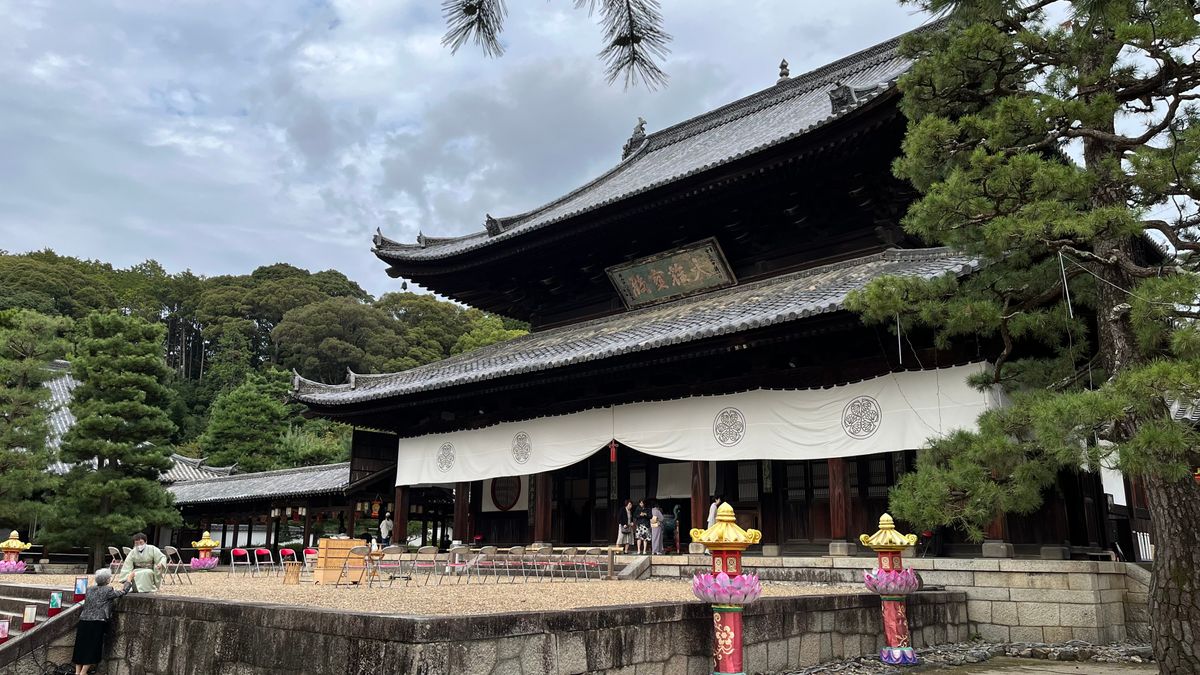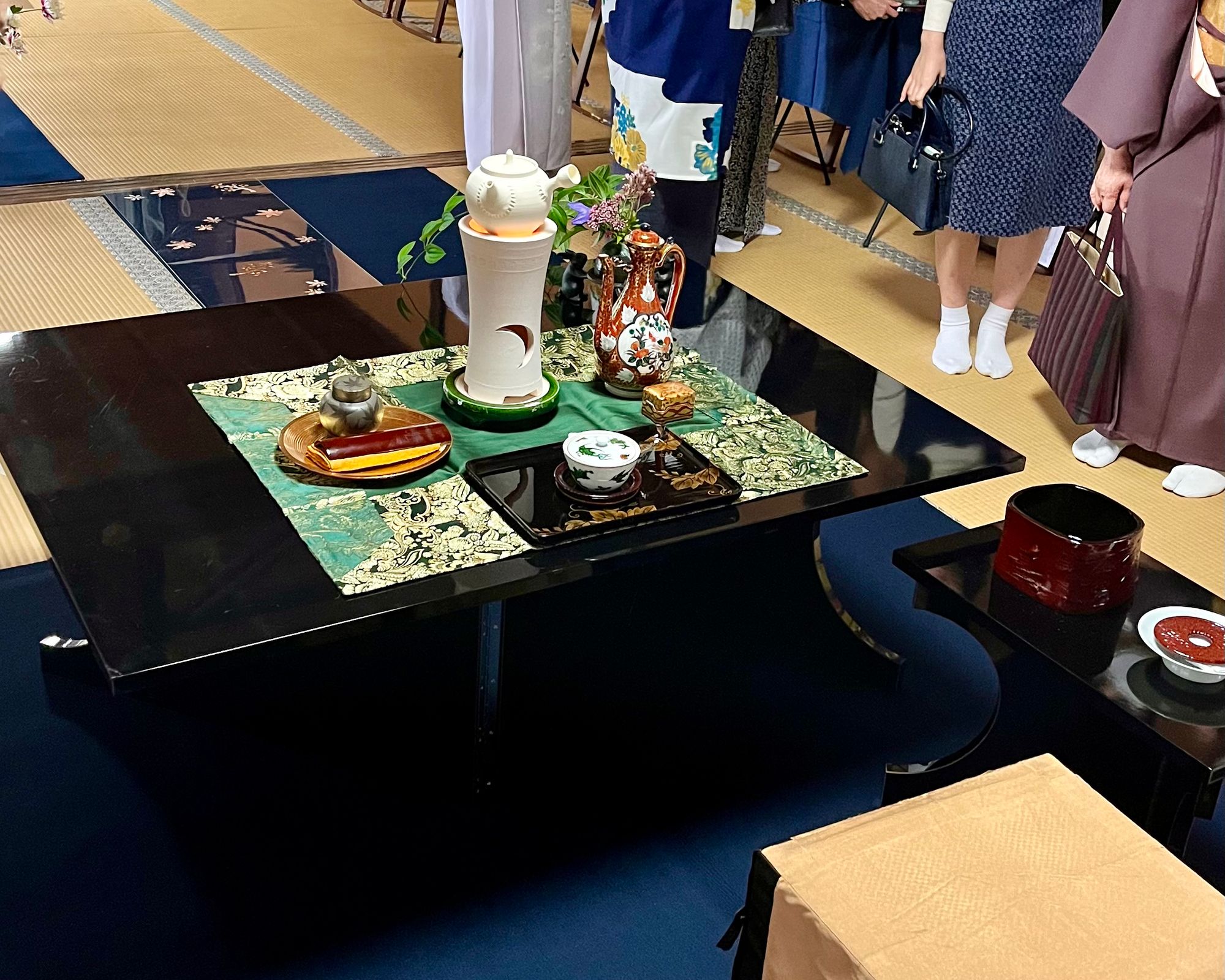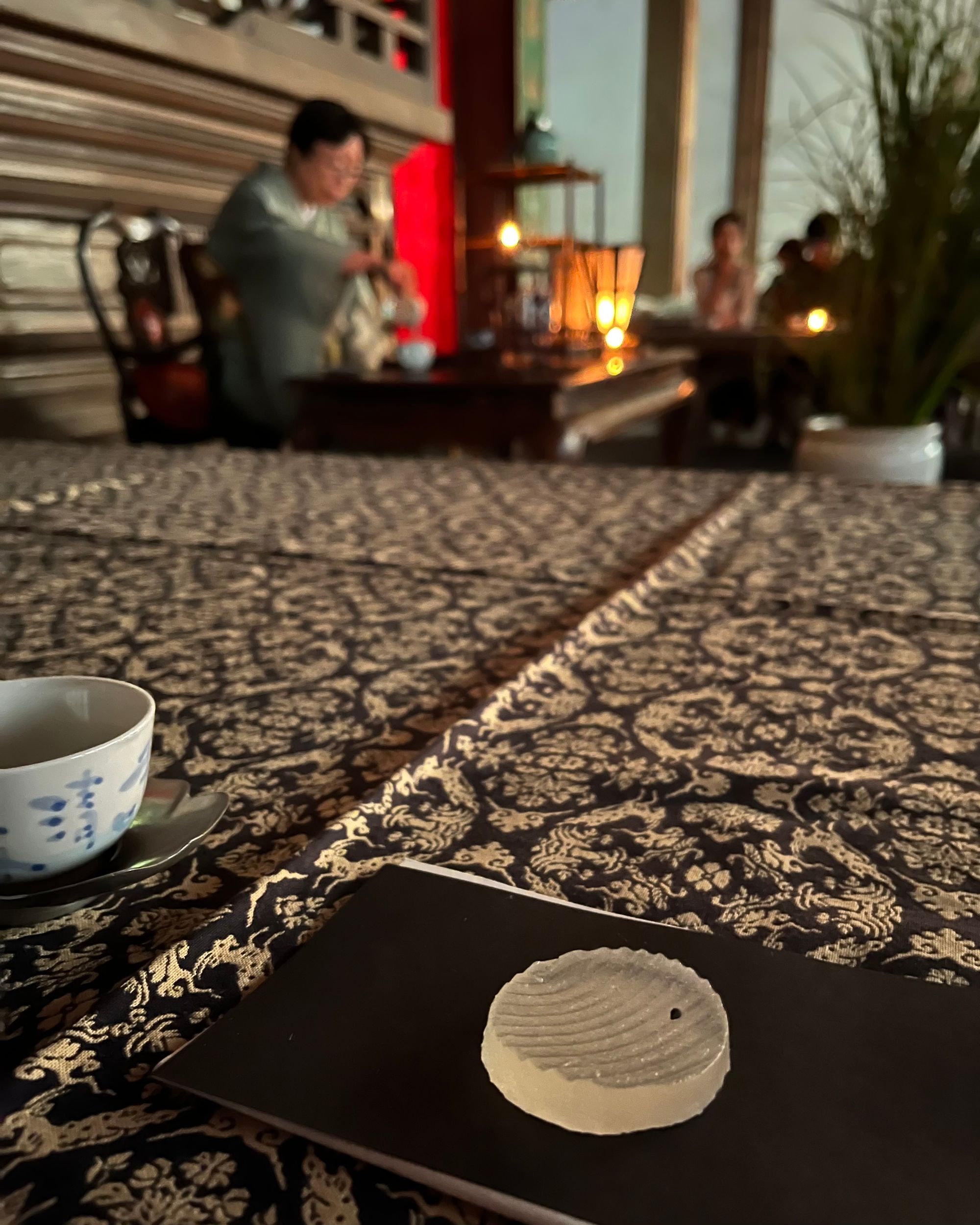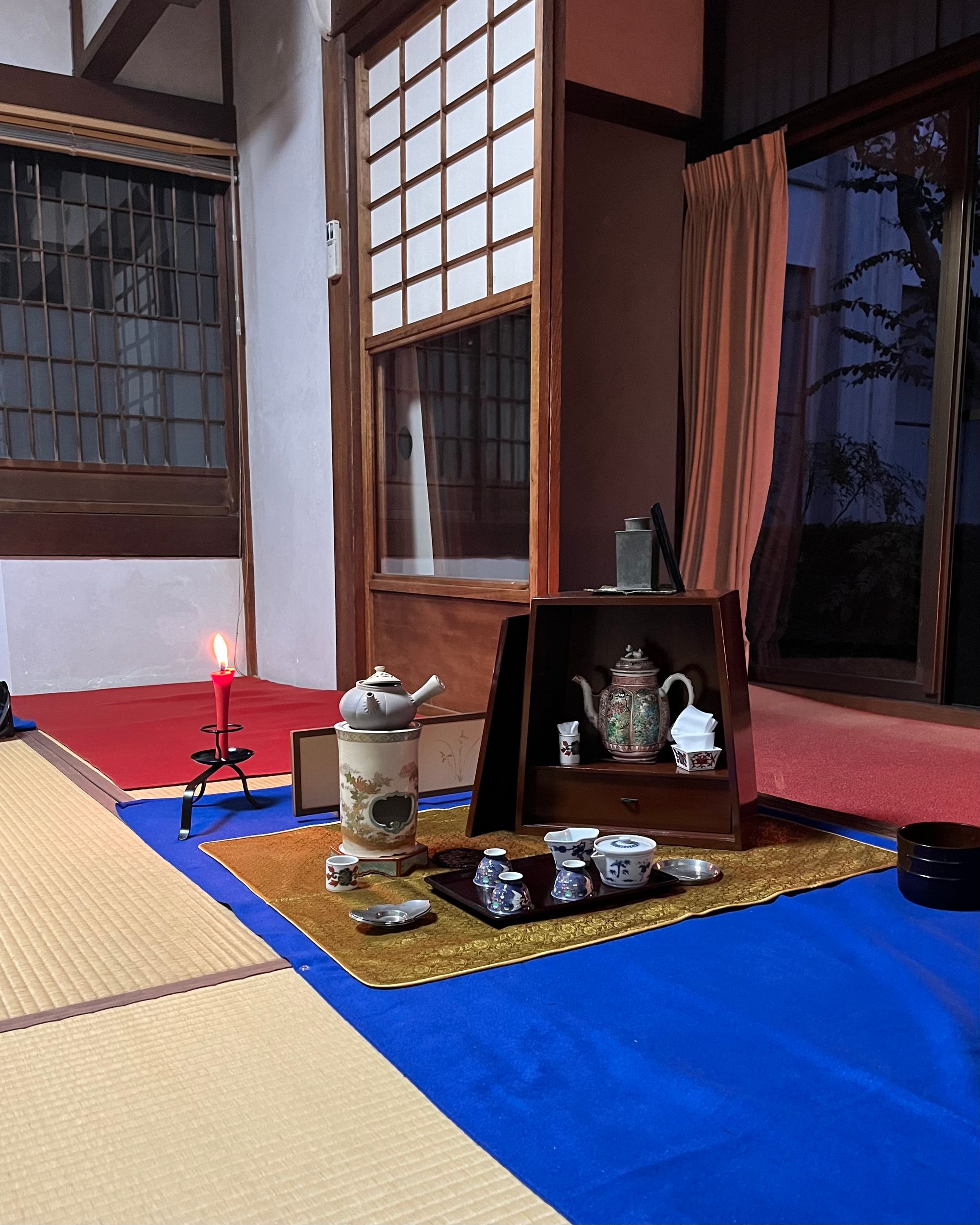Moon viewing sencha ceremony 2023

On Saturday 7th of October, I had the opportunity to assist at a moon-viewing sencha ceremony at Manpukuji Temple 萬福寺 in Uji 宇治. The event was organized by the Japan Senchado Federation, which organizes other related events during the year at Manpukuji temple and sometimes other major cities like Tokyo.
The event entrance included 3 tickets that you could use to assist with one of the multiple sessions and gatherings. In total, 6 schools were performing their art, and spots for those sessions filled up quickly. We had to wait in line at some schools until they opened the bookings for the next timeslot.
Senchado traditions that had ceremonies included:
- Houen ryuu 方円流
- Oubaku Baisa ryuu 黄檗売茶流
- Bifu ryuu 美風流
- Ogasawara ryuu 小笠原流
- Zuihouan ryuu 瑞芽庵流
- Nijyou ryuu 二條流
There was a small shop where you could buy tea leaves, including several Sencha and Gyokuro. Both blended and as single origin, single cultivar forms, which was good to see. Kitagawa, a Senchado teaware shop, had a couple tables with some utensils, both at discounted prices for some pieces and a more artisanal section with an entirely different pricing ladder. There was an exhibition/shop with some exceptional teaware pieces on display. With mind-boggling prices of above 110.000¥ per piece, occasionally per set.
In the temple, there were some preparations for an upcoming lamp festival the next day. It was amazing to see it turn on at the end of the event, where they turned on the lights of the show one day before and gave the close of the event a festivity vibe not so present during the daytime.
The first school we partook in was from the Oubaku Baisa 黄檗売茶流 tradition. It was a long room decorated with many Ikebana displays, and the ceremony was performed on a table at one end of the room. I was glad to see Kyomi Travel as the head assistant throughout the ceremony. She has been a great inspiration in learning more about the Senchado ceremony and its art. From what I could understand with my limited Japanese, the decorations and the selection of the pieces were inspired by a passage in the tale of Genji. In which he takes part in a moon viewing party on a boat. We were served Gyokuro and a wagashi with one single spec of gold leaf as an autumn moon.

After the first ceremony concluded, I did not realize that the spots for other times were filling fast. I wandered around Kitagawa's teaware selection. It had many good pieces and sets. In particular, the sets grab my attention as they could be easily packed down quite compactly and carried around for a hike or during a trip. This was strongly reinforced after I assisted in the Bifu 美風流 tradition ceremony.
The Iemoto of the Bifu tradition, Nakatani Bifu 中谷美風, gave a lengthy talk while the tea was being brewed. The room was fantastic as it was the meditation hall of the Manpukuji temple. The entire building's windows were closed, creating a dark, calm environment with some ikebana simulating a riverside. With the help of a projector, they shone a moon reflection onto the hall's floor. He first apologized for using a projector. But the final result was stunning and created a relaxed atmosphere.
His speech revolved around nature and the connection with the Sencha ceremony at the beginning, where he showed and explained the meaning of the hanging scroll. Then he explained that the tea we were to be served was an Oolong made by his daughter, who runs a tea farm. From there, the theme focused on one topic I am really interested in, the Bunjin 文人. He briefly explained the broader meaning and how to apply it when brewing. And how it evolved with time into the Bunjincha 文人茶. It was refreshing to hear that we should break some barriers and procedures for Sencha on certain occasions. Honouring the Bunjicha style, where they would commonly brew in the forests or riverbeds, surrounded by nature or in studios where the gathering was also an opportunity to compose poetry, calligraphy and other related arts.

After the ceremony, we wandered around the temple, looking at the other halls not used for the event. Also stood outside the Baisao hall in the temple, a small building near the building used by the Senchado association.
For the last tea ticket, we booked at the Nijyou ryuu tradition 二條流. We had to wait for an available time slot and then wait inside again. During that waiting time, I had a small chat with two ladies, surprised by the small but noticeable amount of foreign people at the event. We also chatted about what traditions they were studying and how they combined them with other arts. One lady also practised ikebana and was very attentive to the floral arrangements in each school. The other lady was more drawn to the tea utensils used by each school. She also lived close to the Nagatani Souen 永谷宗円 house and museum. She was fascinated by the connection of Sencha processing and how it historically evolved into the Senchado of today. The highlight of the waiting period was when the group participating left the room before we were allowed in. An older lady came out with a walking stick. While heading out, she told everyone how delicious the sweets served inside were. She was not wrong. The sweets were the best ones!
At the Nijyouryuu gathering, the air was a bit more formal than in others. Everyone was in seiza in a packed room, except for one little corner reserved for an Iemoto from another school. And I believe the Wakashosho from the Higashiaberyu tradition present. The Nijyouryuu Iemoto showcased some historical pieces of teaware and art during the event. We were served a second brew of the tea, and they brought a server out and let us pass it around in a similar fashion to a matcha tea ceremony. Something that really impressed me from the three gatherings we participated in this one was the first one where the guest's fan and other utensils were used. There was an expectation for the guest to show up with their own kaishi and kuromoji. There was, by far, a more formal air to it, but still with some informality in the conversation, if that makes sense.

At the end of the event, we gathered in front of the main hall, where a ceremonial offering was made to the temple. There were at least 3 different offerings, and no explanation was presented. So, the procedures were a bit difficult to follow and understand.
It was an amazing opportunity to see several Senchado traditions performing their art together. The next occasion will be during their annual meeting sometime in spring next year at Manpukuji, with some smaller gatherings in other major towns, like the gathering in Tokyo a few days ago. I look forward to the spring gathering and learning more about the Sencha ceremony. Luckily, there are plenty of schools in towns around Wazuka. Hopefully, the opportunity to visit some of them will show up soon.
